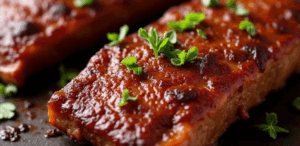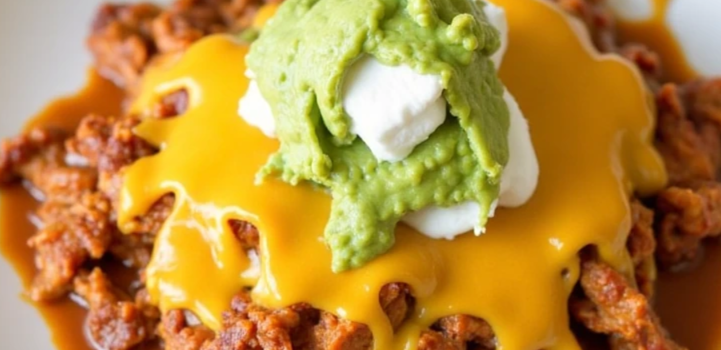What Is South African Bobotie and How It’s Made: A Chef’s Complete Guide

Bobotie is one of those dishes that has lived many lives in my kitchen. It’s savory, subtly sweet, and warmly spiced—an unmistakable expression of South Africa’s Cape Malay heritage. As a chef passionate about regional African cuisine, I’ve prepared Bobotie for home tables and formal dinners alike. In this guide, I’ll take you through exactly what it is, how to make it, and how to adapt it to your own rhythm and tools.
- Origins and Meaning of Bobotie
- Essential Ingredients for Traditional Bobotie
- Cooking Time and Method Comparison Table
- How to Make Classic Bobotie in the Oven
- Bobotie in the Microwave: Fast but Flavorful
- Slow Cooker Bobotie: Rich and Effortless
- Creative Variations on Traditional Bobotie
- Classic Sides to Serve with Bobotie
- Spices That Make Bobotie Unique
- Using Leftovers: Bobotie Beyond the Bake
- Bobotie for Special Occasions and Everyday Meals
- Texture and Presentation Tips from a Chef
- Nutritional Insights: Is Bobotie Healthy?
- Adapting Bobotie for Different Diets
- How to Store, Freeze, and Reheat Bobotie
- Final Thoughts: Why I Keep Returning to Bobotie
- FAQ – Frequently Asked Questions About Bobotie
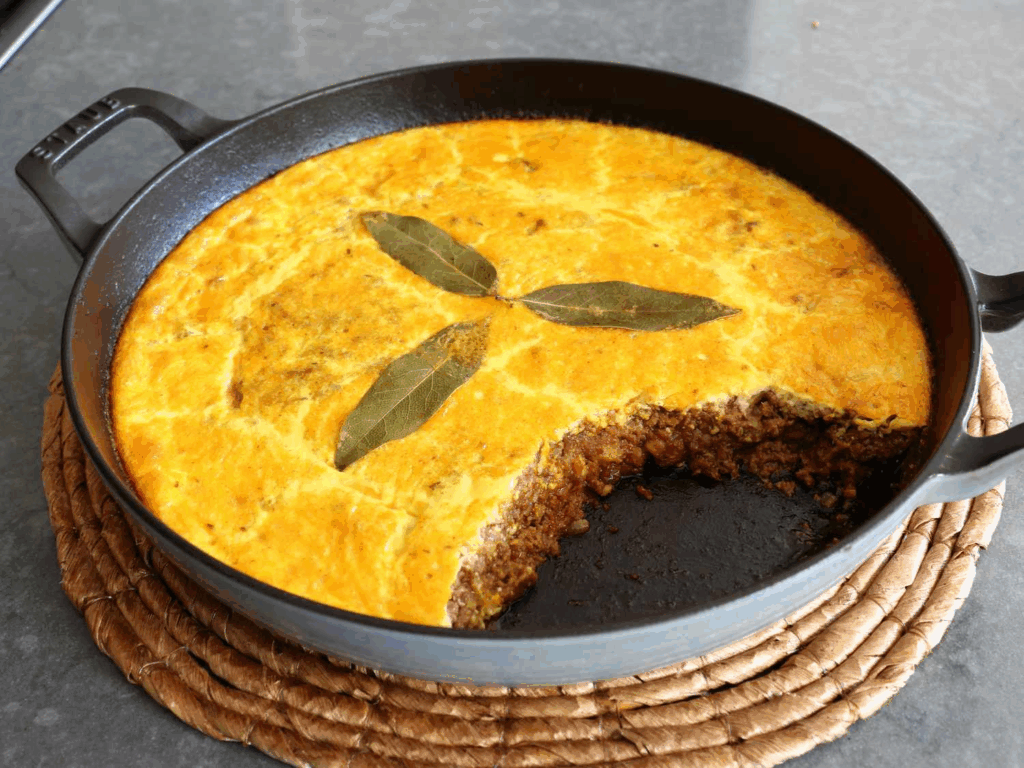
Origins and Meaning of Bobotie
Bobotie is a traditional South African dish made with spiced minced meat, baked with a creamy egg custard on top. It’s considered one of the oldest recorded recipes in South African culinary history, dating back to the 17th century when Dutch settlers brought it to the Cape and combined their methods with Malay spices and African ingredients.
The word “bobotie” itself likely has Indonesian roots. Over time, it evolved into the rich, aromatic casserole it is today—layered with curried beef or lamb, enriched with dried fruit, and crowned with a silky baked topping.
I often explain Bobotie to international guests as South Africa’s answer to moussaka or shepherd’s pie, but with its own bold identity. The spice mix—typically turmeric, curry powder, coriander, and a hint of sweetness—makes it truly stand apart.
Essential Ingredients for Traditional Bobotie
In my professional kitchen, I return to a core set of ingredients every time I prepare Bobotie, but I also teach students how to modify based on what they have. Here’s the classic structure I use:
Meat base:
- 500g (about 1 lb) ground beef or lamb
- 1 onion, finely chopped
- 2 cloves garlic, minced
- 1 tablespoon vegetable oil
- 2 teaspoons curry powder
- ½ teaspoon ground turmeric
- ½ teaspoon ground coriander
- Salt and pepper to taste
- 2 slices white bread, soaked in ½ cup milk
- 1 tablespoon chutney (usually Mrs. Ball’s)
- 1 tablespoon lemon juice or white vinegar
- 1 tablespoon brown sugar
- ¼ cup raisins or sultanas
- 1 egg (for binding)
Custard topping:
- 2 eggs
- ½ cup milk
- Pinch of salt
- Bay leaves (2–3 for garnish)
The bread and milk combo keeps the meat moist and tender, while the custard topping creates a golden, slightly creamy crust that pulls everything together.
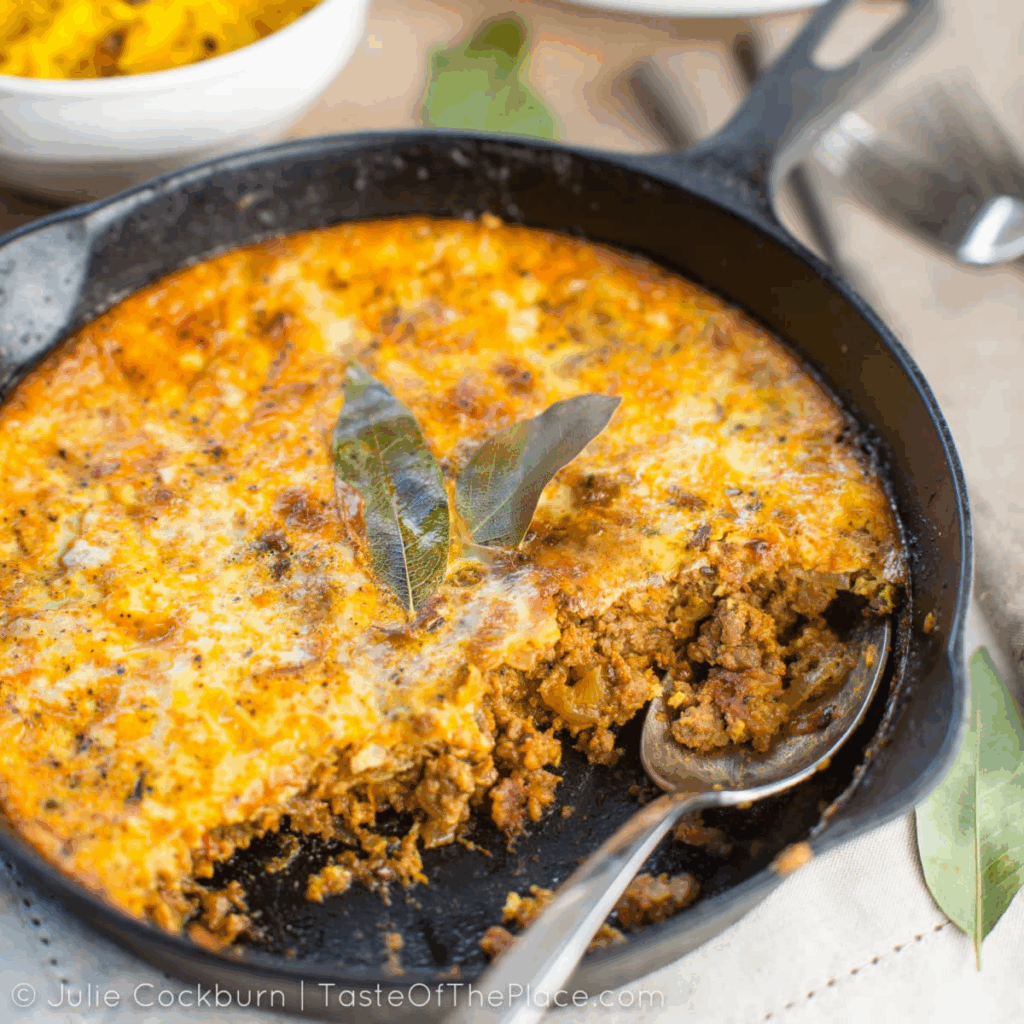
Cooking Time and Method Comparison Table
Here’s a reference I’ve built based on my real-time testing of Bobotie in multiple kitchens—from home ovens to culinary schools.
| Method | Prep Time | Cooking Time | Best For |
| Conventional Oven | 25 mins | 40–45 mins | Full flavor, authentic texture |
| Microwave | 15 mins | 10–12 mins | Small batches, quick weekday meal |
| Slow Cooker | 20 mins | 3–4 hours | Tender meat, low-maintenance baking |
| Pressure Cooker | 15 mins | 25 mins | Meat softening only; custard added afterward |
| Air Fryer | 20 mins | 20–25 mins | Smaller trays, browned top, modern kitchens |
If I want a lighter, more brothy contrast to Bobotie, I often serve a small starter like Sierra Leonean fish soup—it complements the richness beautifully.
How to Make Classic Bobotie in the Oven
This is the method I trust the most—especially when serving guests. I begin by sautéing onions and garlic in oil until soft, then add the minced meat and brown it evenly. Once cooked, I stir in the curry powder, turmeric, coriander, and raisins. The kitchen smells incredible at this point.
Next, I squeeze out the soaked bread (but keep the milk), mash it, and stir it into the meat along with chutney, vinegar or lemon juice, brown sugar, and one beaten egg. I season well with salt and pepper, then transfer everything into a greased baking dish.
I flatten the surface and pour over the custard—made by whisking two eggs with the reserved milk and a pinch of salt. I tuck in two bay leaves on top for aroma.
Bake at 180°C (350°F) for 40–45 minutes until the top is set and lightly golden. Let it rest for 10 minutes before serving.
Bobotie in the Microwave: Fast but Flavorful
I first developed this microwave version during lockdown, when time and space were tight. While it won’t produce the same golden crust as oven-baked Bobotie, it’s surprisingly good—especially if you’re cooking for one or two people.
I start by browning the minced meat in a skillet (or microwave if needed, though stovetop works better). Then I mix in softened onions, garlic, soaked bread, spices, raisins, chutney, and lemon juice, following the same method as for the oven version.
Once combined, I transfer the mixture to a microwave-safe dish and press it flat. I beat an egg with milk for the custard layer, pour it over the meat, and lay bay leaves on top.
Cover with a lid or plastic wrap (with a steam hole), then microwave on high for 10–12 minutes. I let it rest for 2 minutes before serving. On my first try, I was amazed how satisfying it still was—especially with yellow rice and chutney on the side.

Slow Cooker Bobotie: Rich and Effortless
This method is perfect for busy households. The meat cooks slowly and absorbs the sweet-spiced flavors beautifully, while the custard can be added later or skipped entirely for a simpler, stew-like result.
I brown the meat and onions first on a stovetop. Then I add all spices, soaked bread, raisins, chutney, vinegar, and egg into the slow cooker bowl with the meat. I mix well and press it down flat.
I cook it on low for 3–4 hours. If I want the full experience, I beat two eggs with milk and pour the custard over the meat during the last 30 minutes, leaving the lid slightly ajar to help it set.
The result isn’t as firm on top as in the oven, but the flavor is deep and fully developed. From my experience, this version is especially good for meal prep or family-style serving. Interestingly, just like Ogbono soup from Nigeria, Bobotie benefits from slow cooking—the longer it simmers, the better the flavor layers.
Creative Variations on Traditional Bobotie
Over time, I’ve experimented with dozens of Bobotie twists. Some came from personal curiosity, others from client requests with dietary or regional preferences.
- Chicken or turkey bobotie: A lighter version, especially with sweet curry and fewer raisins.
- Lentil bobotie: A full vegetarian option using brown lentils, chopped walnuts, and mushrooms for texture.
- Cape Malay spiced: I go heavier on cinnamon, add crushed almonds, and finish with chopped dried apricots.
- Spicy beef bobotie: More chili powder, less sugar, and a splash of peri-peri sauce in the custard.
- Bobotie muffins: I bake the meat mixture in muffin tins with mini custard tops—perfect for parties or lunchboxes.
Some people even make sweet potato bobotie, swapping the bread for mashed spuds. I tried it once—it was softer but still delicious with lamb mince and cinnamon.
Classic Sides to Serve with Bobotie
The best way to serve Bobotie is with a balance of savory and sweet-acidic accompaniments. Here’s what I recommend after years of pairing trials:
- Yellow rice with raisins: Cooked with turmeric and a pinch of sugar. The go-to side.
- Chutney: Mango or peach chutney adds brightness and contrast to the spiced meat.
- Sliced bananas: Yes, it works! A creamy, sweet counterbalance.
- Roasted vegetables: Butternut, carrots, or baby marrows balance the richness.
- Sambals: Chopped tomato and onion salad, lightly dressed with vinegar.
- Pap (maize meal porridge): Though not traditional for Bobotie, I’ve served it for guests who enjoy the texture—similar to sadza.
I’ve even served Bobotie as part of a pan-African plate, alongside sadza, jollof rice, or Sierra Leonean fish soup for contrast.
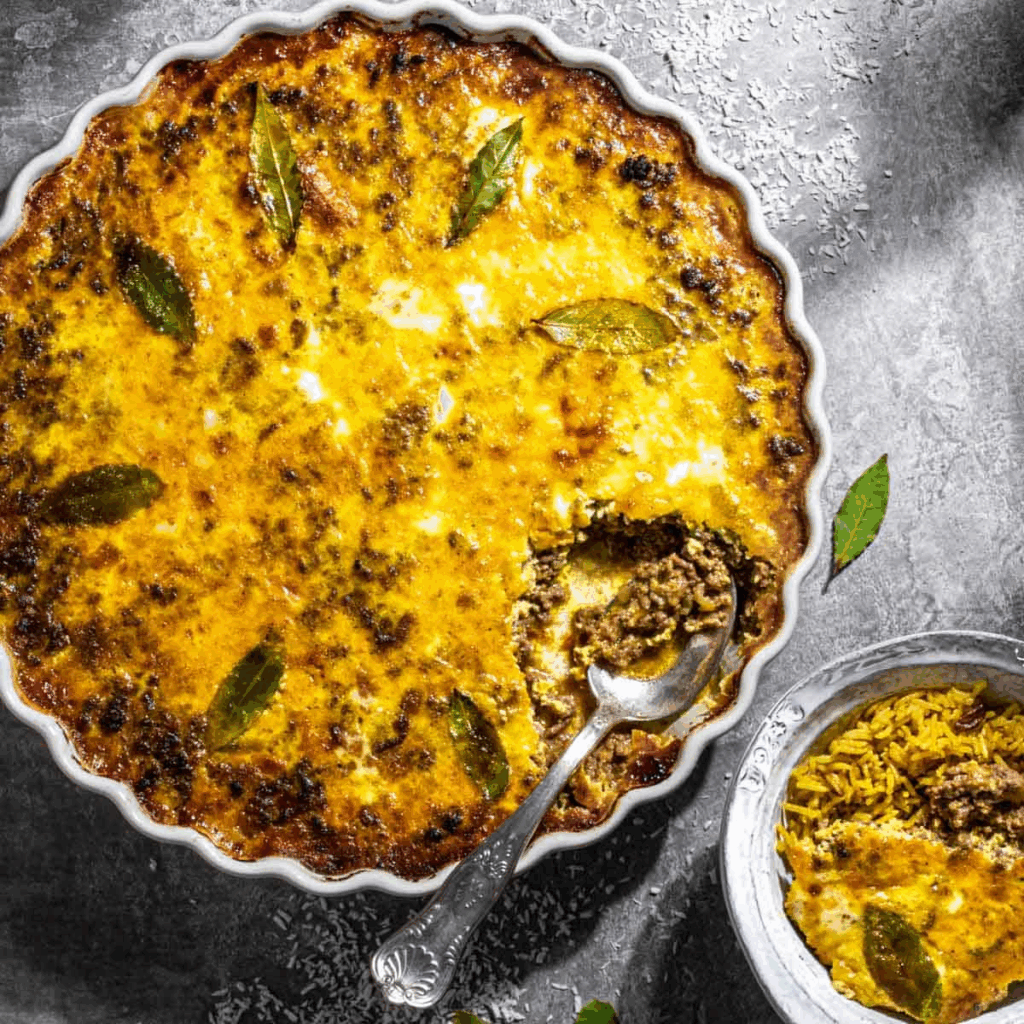
Spices That Make Bobotie Unique
What truly defines Bobotie is its warming, gently aromatic spice blend. Unlike fiery dishes, this recipe layers subtle complexity—sweet, savory, and spiced in perfect balance.
Here are the core spices I always use:
- Curry powder – a medium blend works best. Too mild and it fades, too strong and it dominates.
- Turmeric – gives Bobotie its signature golden hue.
- Ground coriander – adds citrusy warmth.
- Cinnamon or cloves (optional) – for extra Cape Malay depth.
- Bay leaves – not just for decoration; they perfume the custard as it bakes.
From my experience, the key is not to overdo it. I once added too much clove and the meat tasted medicinal. Stick to modest amounts and let the chutney and raisins bring in the sweet notes naturally.
When serving a full menu, I often mirror some of these spices in a starter dish—like adding a touch of coriander to a small bowl of ogbono soup or seasoning rice with turmeric to tie the flavors together.
Using Leftovers: Bobotie Beyond the Bake
I always say that Bobotie is one of those dishes that tastes even better the next day. And with a little creativity, leftovers can be the beginning of something brand new.
Here are some of my go-to ideas:
- Bobotie-stuffed peppers – I mix leftover filling with rice and stuff it into bell peppers. Bake with a little cheese on top.
- Bobotie wraps – Reheat and roll into flatbread with pickled carrots or slaw. Ideal for lunchboxes.
- Mini pies – I spoon cold Bobotie into puff pastry shells and bake them. They fly off the plate at events.
- Bobotie breakfast hash – Chop it up with sautéed potatoes and top with a fried egg. Surprisingly good.
- Freezing – I portion it out into freezer containers. When reheated gently with a splash of milk, it’s just as rich and moist.
In my kitchen, nothing goes to waste—and Bobotie has a unique way of adapting across meals and moods.
Bobotie for Special Occasions and Everyday Meals
I’ve served Bobotie everywhere—from holiday buffets to weeknight suppers. It’s that kind of dish: celebratory but also homey.
For large gatherings, I multiply the recipe in deep trays. I usually bake it the day before, then reheat covered in foil for 20–30 minutes. A sprinkle of fresh parsley just before serving refreshes the look.
For family dinners, I often halve the sugar and raisins, especially for kids. When I cook for older guests or tourists, I keep the sweetness more pronounced—it reminds them of tagines or fruit-studded pilafs.
Bobotie also fits beautifully into pan-African menus. One time, I paired it with sadza, ogbono soup, and East African sukuma wiki—it turned into a celebration of the continent on a single plate. How to make Zimbabwean sadza with meat and How to cook Nigerian Ogbono soup: Both dishes share Bobotie’s comforting depth—and when combined, they create a table rich in culture and flavor.
Texture and Presentation Tips from a Chef
Presentation matters—especially when Bobotie is the star of your table. Over time, I’ve refined a few techniques to keep it visually appealing and texturally perfect:
- Flat surface: I always press the meat mixture firmly into the dish so the custard sets evenly on top.
- Golden top: For extra browning, I brush the custard with a drop of oil or milk before baking.
- Bay leaf placement: I arrange the leaves symmetrically—they infuse and decorate at once.
- Serving slices: Let it rest before cutting, or it’ll fall apart. I use a serrated spatula for clean lifts.
- Accompaniments: A small ramekin of chutney, a wedge of lime, and a scattering of herbs elevate the plate instantly.
Bobotie is meant to be generous, rustic, and warm—but a few small touches can give it restaurant-level polish without complicating the process.
Nutritional Insights: Is Bobotie Healthy?
Bobotie can be a balanced meal when made thoughtfully. I often adjust the recipe based on my guests’ dietary needs without sacrificing flavor.
The base of the dish—lean ground beef or lamb—offers protein and iron. The spices add antioxidants, and the raisins bring natural sweetness and fiber. The custard, while rich, is usually spread thin and can be made with low-fat milk.
If you’re watching calories or carbs, I recommend:
- Reducing sugar or skipping raisins
- Using turkey or lentils instead of red meat
- Baking with egg whites or plant-based milk for the custard
Paired with steamed vegetables and turmeric rice, Bobotie can become part of a wholesome weekly plan. Much like Fish soup from Sierra Leone, it proves that traditional African food can be deeply comforting and nutritionally smart.
Adapting Bobotie for Different Diets
I’ve cooked Bobotie for vegans, vegetarians, gluten-free eaters, and keto clients. Here’s what I’ve learned along the way:
- Vegetarian: Use lentils or textured vegetable protein, skip the egg in the meat base, and use a plant-based custard.
- Vegan: Same as above, with oat milk and cornstarch for the topping. Chutney adds the moisture and brightness.
- Gluten-free: Replace the bread with gluten-free breadcrumbs or soaked oats.
- Low-carb: Skip the sugar and raisins; use full-fat meat and custard with almond milk.
- Halal or kosher: Use certified meat and adjust seasonings accordingly.
From my experience, Bobotie is one of the most forgiving recipes when it comes to adaptation. Once you’ve mastered the base method, the rest is about intuition and good taste.
How to Store, Freeze, and Reheat Bobotie
In my kitchen, Bobotie is a frequent part of meal prep for a reason—it stores and reheats beautifully.
Storing: After cooling completely, I refrigerate it in airtight containers for up to 4 days. I keep the custard layer intact to prevent drying.
Freezing: I portion Bobotie into individual servings and freeze them wrapped tightly. It lasts well for about 2 months. Labeling with date and portion size helps keep things organized.
Reheating: For best results, thaw in the fridge overnight, then reheat covered in the oven at 160°C (325°F) for 15–20 minutes. You can also microwave it with a splash of milk, covered loosely to keep moisture in.
From my experience, Bobotie’s flavor actually deepens over time, especially when reheated gently. It’s one of those dishes that tastes even better the next day.
Final Thoughts: Why I Keep Returning to Bobotie
Bobotie, to me, represents everything I love about Southern African food—it’s layered, textured, humble, and yet elegant. I’ve prepared it for street food festivals and white-tablecloth dinners alike, and it always hits the mark.
It brings together history, comfort, and creativity in one dish. It reminds me that food doesn’t have to be complicated to be profound. Just like Zimbabwean sadza with meat or Nigerian Ogbono soup, Bobotie carries memory and meaning with every bite.
My advice? Respect the flavors, trust the process, and don’t be afraid to make it your own. That’s the spirit of African cooking—and the reason I’ll never stop making Bobotie.
FAQ – Frequently Asked Questions About Bobotie
What does Bobotie taste like?
From my experience, it’s a comforting blend of savory, sweet, and slightly spicy. The meat is curried and rich, while the custard adds a creamy, golden contrast. The raisins and chutney add little pockets of sweetness that surprise and delight.
Can I make Bobotie ahead of time?
Yes, and I often do. You can assemble the dish, refrigerate it overnight, then bake it the next day. Or bake it fully, cool, and reheat. It holds its structure and flavor beautifully.
Is Bobotie spicy?
Not usually. It’s more aromatic than hot. I use medium curry powder, and if I’m cooking for spice-lovers, I might add chili flakes or peri-peri sauce. But the base recipe is family-friendly.
What’s the best meat to use?
I’ve used beef, lamb, turkey, and even plant-based mince. Ground beef is most traditional, but lamb adds richness. For leaner meals, turkey works well with extra chutney for moisture.
Can I skip the custard topping?
Technically yes, but I wouldn’t recommend it. The custard seals in the flavor and adds the unique texture Bobotie is known for. Even a thin layer makes a big difference.
Can I use leftover meat for Bobotie?
Absolutely. I’ve turned leftover roast beef or lamb into Bobotie by chopping it fine. Just add a bit of milk-soaked bread to keep it moist.
Is it okay to leave out raisins or sugar?
Yes. Some people don’t like sweet notes in savory dishes. I’ve made raisin-free Bobotie plenty of times. Just increase the spices slightly to maintain balance.
What do I serve with Bobotie?
Traditionally, yellow rice with raisins is the go-to. But I’ve also served it with pap, roasted veggies, and even sadza for a pan-African twist. Chutney is always welcome on the side.
Can I make Bobotie in muffin tins?
Yes, and I’ve done it for events. Just press the meat into greased tins, pour custard on top, and bake until golden. They’re great for portion control and look elegant on a platter.
How long does it take to bake Bobotie?
In a standard oven dish, it takes about 40–45 minutes at 180°C (350°F). I check that the custard is firm and golden before removing it.
Can Bobotie be frozen after baking?
Yes. I cool it completely, slice it into portions, wrap them well, and freeze. I’ve kept it frozen for 2 months with great results. Reheat gently to preserve texture.
What kind of chutney should I use?
I always use fruit-based chutney—mango, peach, or apricot. Mrs. Ball’s is the South African standard, but any sweet-sour chutney will work. It’s the soul of the dish.
Can I add nuts or dried apricots?
Definitely. I’ve added almonds, pistachios, and chopped dried apricots in Cape Malay–inspired versions. They give texture and richness that pair beautifully with lamb.
Why is my Bobotie dry?
Most likely, not enough milk or the meat wasn’t fatty enough. I always soak bread thoroughly and don’t skimp on the egg-milk mix. Also, don’t overbake—it dries out quickly.
Is Bobotie a main or side dish?
It’s always the main dish in my menus. With rice or pap and a few sides, it’s a complete, satisfying meal that stands on its own.



